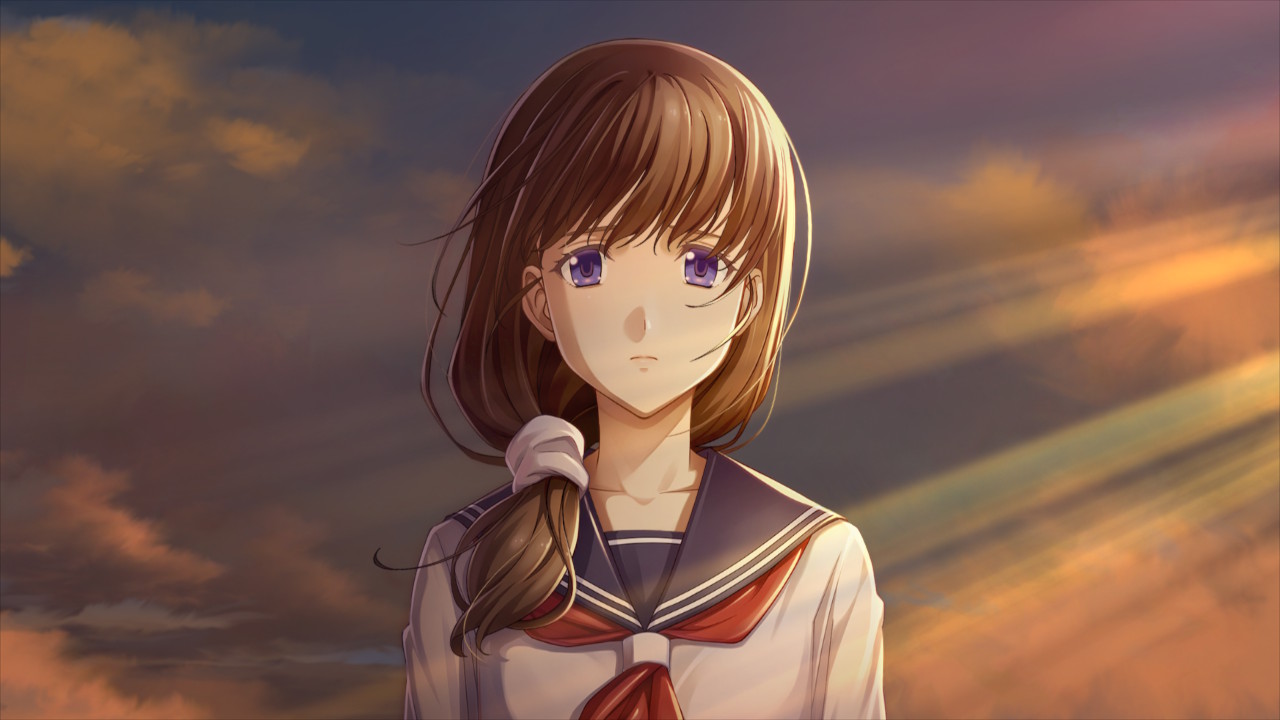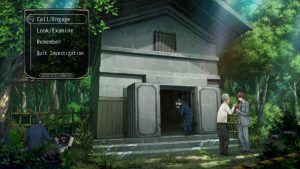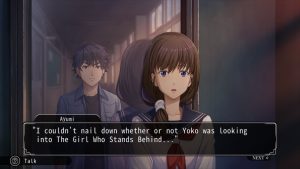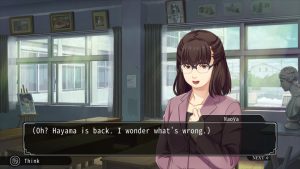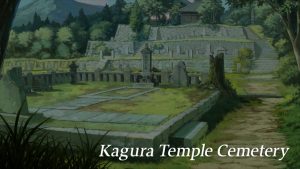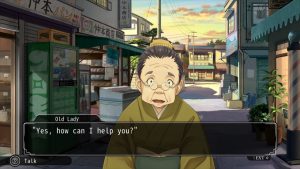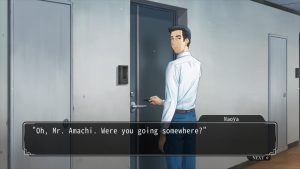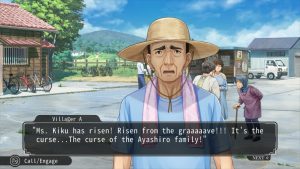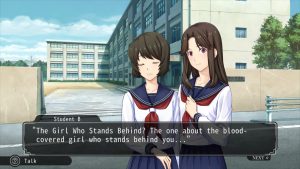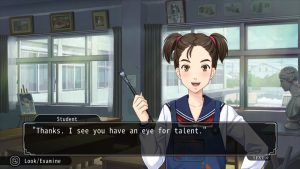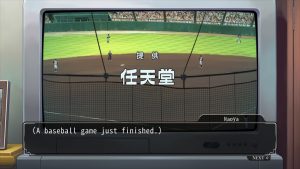- Famicom Detective Club: The Missing Heir
- Famicom Detective Club Part II: The Girl Standing in the Back
- BS Detective Club: The Past that Disappeared in the Snow
- Famicom Detective Club (Switch Remakes)
This article will refer to content discussed in the articles for original Famicom Disk System games (Part 1 and 2 of this articles series).
The Famicom Tantei Club games are considered classics of the Japanese Adventure (ADV) game genre, and it was welcome news when it was revealed in 2019 that the first two games were to be remade for the Switch. As the planned 2020 release date was delayed by almost a year, an even bigger surprise came in February 2021 when Nintendo announced that the games would be localized into English for the first time. This was exciting news for fans of video game history, as these are two of the of the few remaining 1980s Nintendo first party games that has never been available in English. The remakes were developed by MAGES, with series’ creator Yoshio Sakamoto returning as producer. The two games, titled in English as The Missing Heir and The Girl Who Stands Behind, were released digitally as separate games and as a bundle. The Japanese version was also given a physical release in the form of a Collectors’ Edition set.
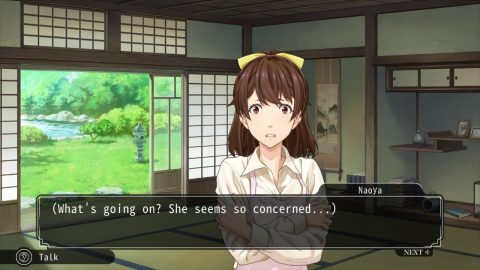
The Missing Heir (Switch)
The remakes are highly faithful to the original games – almost to a fault, as we’ll get to later – and have been remade with the same approach as that of the 1998 Super Famicom (SFC) remake of Ushiro ni tatsu shoujo, i.e. keep all of the text and game progression intact while adding new visuals and sounds. The same quality-of-life improvements introduced in the SFC remake also return: new additions to the list of commands are highlighted in yellow, and there is a note book that summarizes information on the case and every person you have encountered. The story and dialogue in the Switch remakes are preserved more or less untouched from the original FDS versions save for a few new establishing shots. For most players this will be a welcome decision, as they will be able to experience these until now long-lost Nintendo stories as they were originally intended, but with the benefit of a contemporary coat of paint. And it is indeed a beautiful coat of paint, but ultimately one that does little to mask that the 30 year old game design with all its kinks and issues has been left unaltered. The games are also clearly still set in the late 1980s – there are for instance no computers or cellphones – but this is for some reason never stated outright, which might confuse new players unaware of the origin of these games.

The Girl Who Stands Behind (Switch)
The old-school game design aside, what we do get in these remakes are generally of very high quality in both the audio and the visual department. The music has been re-recorded in symphonic arrangements that truly bring out the best of the original compositions. The soundtrack of the old versions can also be turned on if so desired, which is a nice touch. The English translations are excellent, as you would expect from an official product, and avoids the few small blunders of the fan translation of the second game. The biggest new addition is that the game is fully voiced in Japanese (and subtitled in English). Thanks to many years of games such as the Yakuza series being released in the West without being dubbed, Western players seem to have warmed up to the idea of keeping the Japanese voice-over, and for a game like this that is clearly set in a Japanese environment, having the original voice acting only adds to the immersion. A nice touch is that the voice actor who played Ayumi Tachibana in BS Tantei Club, Yuko Minaguchi, returns to voice the character. The main character is also fully voiced (although there is an option to turn off his audio), but the player is still asked to name the protagonist. By this point, it would have made more sense just to give the character an official name and stop pretending that he is a blank avatar for the player to project themselves onto – which he really never was in the first place since his personal backstory gets involved in the plot in both games. As it is now, any lines of dialogue that refer to his name are just omitted from the voice acting, which feels like a roundabout solution.
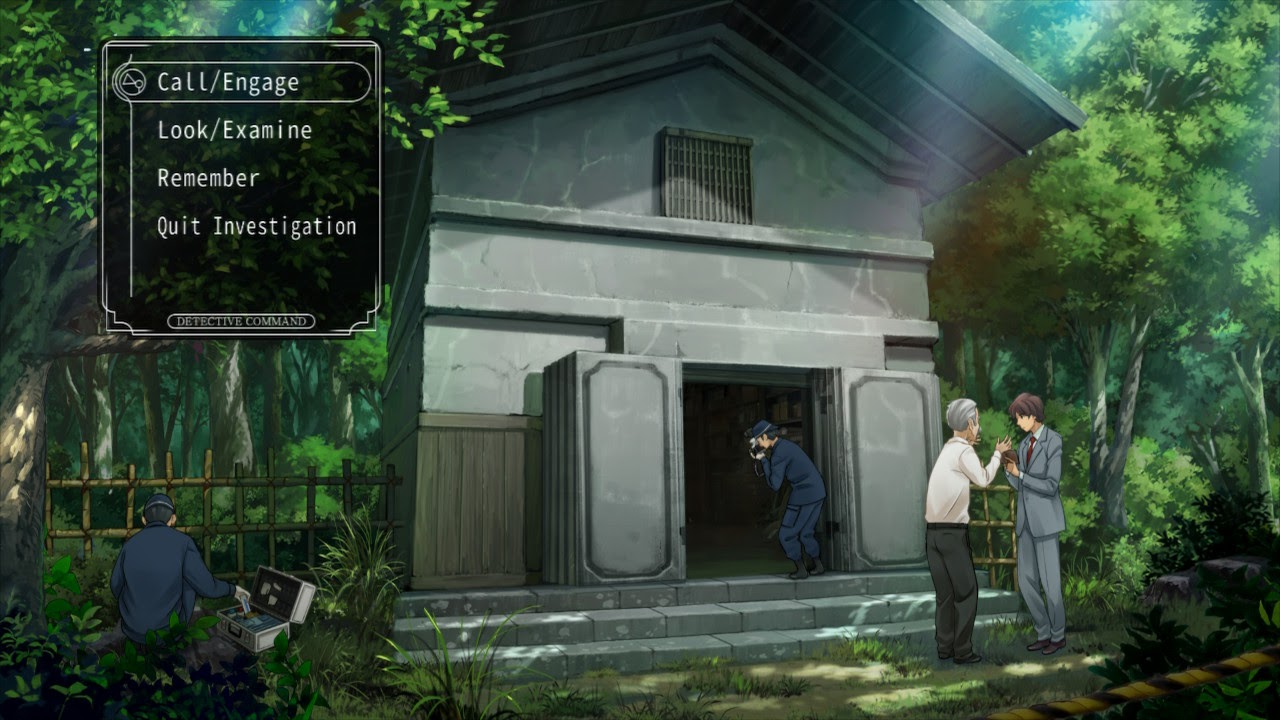
The Missing Heir (Switch)
What’s most exciting about these two games coming to the Switch, is that it marks the first time the first game, The Missing Heir, is made available in English. For the first hour or two, the remake does a great job of making the narrative flow better than the in original version. As was pointed out in the article for the FDS version, the game is inherently talky and slow, but the addition of the voice acting and new exterior shots for each location you visit goes a long way to improve the narrative immersion. The atmosphere of the game has also been much improved and is one of the strongest points of the remake; gone are the blue-themed backgrounds of the original and they have been replaced by lush countryside environments, complete with leaves and grass animated to move in the wind, and ambient noises such as the sound of crickets. The game is now divided into 10 chapters that each constitute a day (including a day-night cycle for all the backgrounds), and the mechanic where you need to go back to the office to consult your colleague Ayumi ever so often makes much more sense now, since you will always do that at the end of a day/chapter. The voice acting and animation of Ayumi’s character is excellently directed in the remake, and she does really feel like a part of the team now, which was one of the concerns of the original version where she felt more like a game play device than a fleshed out character. Interestingly, within the Switch remakes, the acting portrays her as a much more confident person in The Missing Heir than in the chronologically earlier The Girl Who Stands Behind, which makes for a nice little character arc.
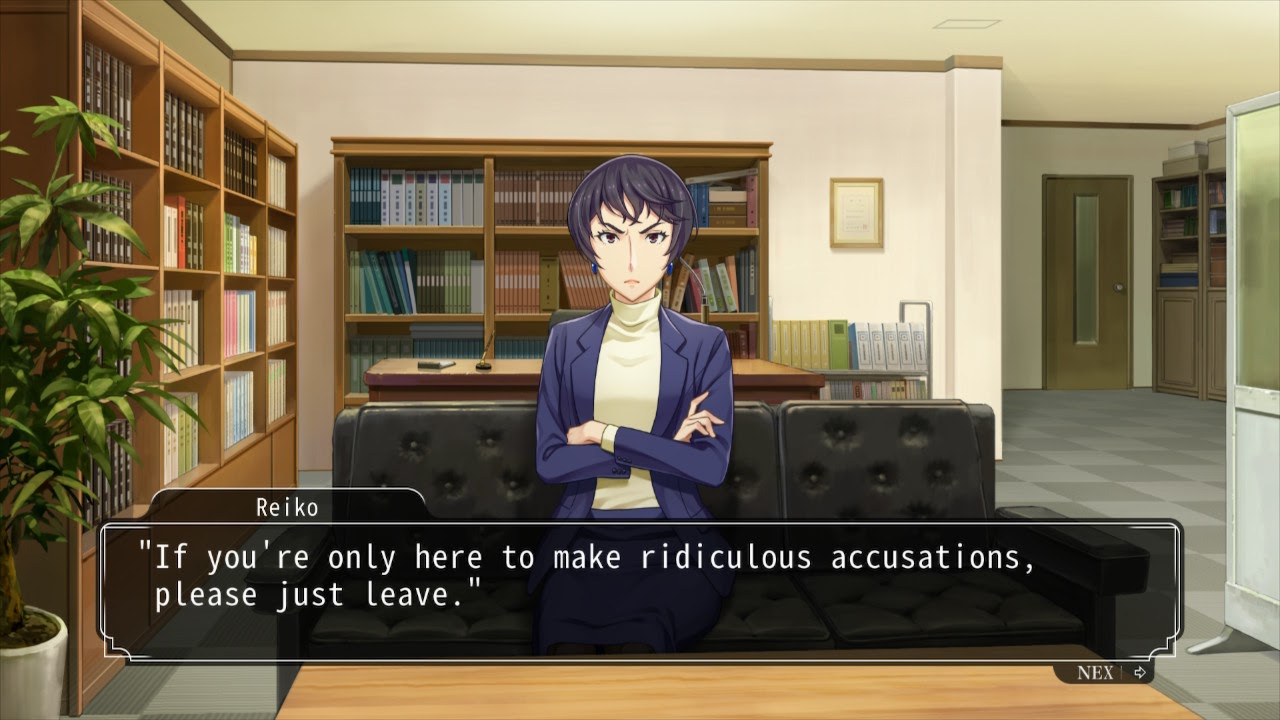
The Missing Heir (Switch)
However, towards the end of the second chapter of The Missing Heir, it becomes clear that the triggering of the story flags needed to proceed is just as cumbersome and picky as in the FDS version. This is really a shame, since there are a couple of scenes where progress is really obtuse (even when you know what you want the main character to do, making him do it can be very tedious), and there is a risk that this will throw off new players unfamiliar with the clunkiness of the FDS game, to the point that they might give up on the game. If you find yourself stuck in one of these scenes, don’t hesitate to use a walkthrough; even one for the original version will do. Since these games are not that long (~8h) and have worthwhile stories, looking up the solution to such scenes will likely increase your appreciation of the games. The 3D maze at the end of the game also returns, but with the added modern sensibilities such as better animation and access to an onscreen map, it is much less of a hassle to play this time.
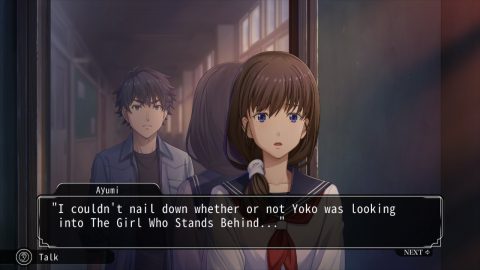
The Girl Who Stands Behind (Switch)
As forThe Girl Who Stands Behind, it again shines brighter than The Missing Heir, as discussed in Part 2 of this article series. Both remakes have been given the same treatment, and all the improvements implemented in The Missing Heir remake are also present here. The cinematography of the introductory sequence when the protagonist is on the run from the police is however much less striking than in the highly stylized renditions in two previous versions of the game, but this is probably the only example in both remakes when the new contents seems like a downgrade from the old. Also, one minor character in The Girl Who Stands Behind whose original depiction hasn’t aged well has been redesigned and rewritten, which is a welcome change.
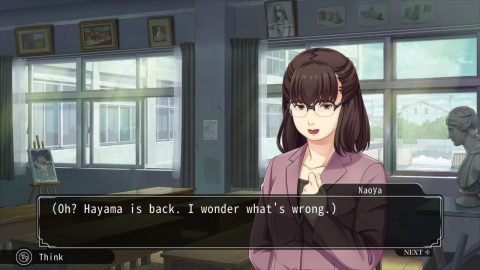
The Girl Who Stands Behind (Switch)
In all, these remakes are very much retro games with a modern coat of paint. From a game preservation point-of-view, this is terrific news, as the beautiful presentation and English translation will enable more players to interact with the game and learn about this important piece of Nintendo history. However, as far as being brand new ADV games in 2021, the antiquated gameplay sadly drags the games down a bit. Had only a handful of scenes been tweaked with better progression mechanics and less obtuse means of triggering progression flags (especially in The Missing Heir), these remakes could have stood on their own as excellent additions to the genre. However, the modern aesthetics coupled with the old-school gameplay creates a small but nagging dissonance that you don’t really get from playing the FDS originals, where the age alone allows you to expect and stand a higher level of clunkiness. Nevertheless, the fact that the series has been officially translated to English for the first time with such a beautifully audiovisual presentation makes them well worth playing, despite the issues. For player’s trying the series for the first time, it might be a good idea to start with the second game (The Girl Who Stands Behind) since it is the better game and chronologically the first. Given how true to the previous versions these remakes are, for those who have already played the fan translation of the SFC game, the brand-new translation of The Missing Heir would probably be the main attraction here.
References and further reading
Official English sites for the remakes:
https://www.nintendo.com/games/detail/famicom-detective-club-the-missing-heir-switch/
https://www.nintendo.com/games/detail/famicom-detective-club-the-girl-who-stands-behind-switch/
Official Japanese site for the remakes:
https://www.nintendo.co.jp/switch/aw3ca/
Screenshot comparisons

The Missing Heir (Switch)
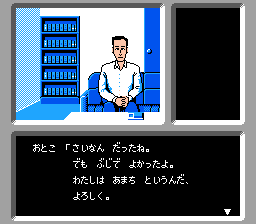
Kieta Koukeisha (FDS)

The Missing Heir (Switch)
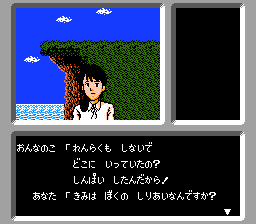
Kieta Koukeisha (FDS)
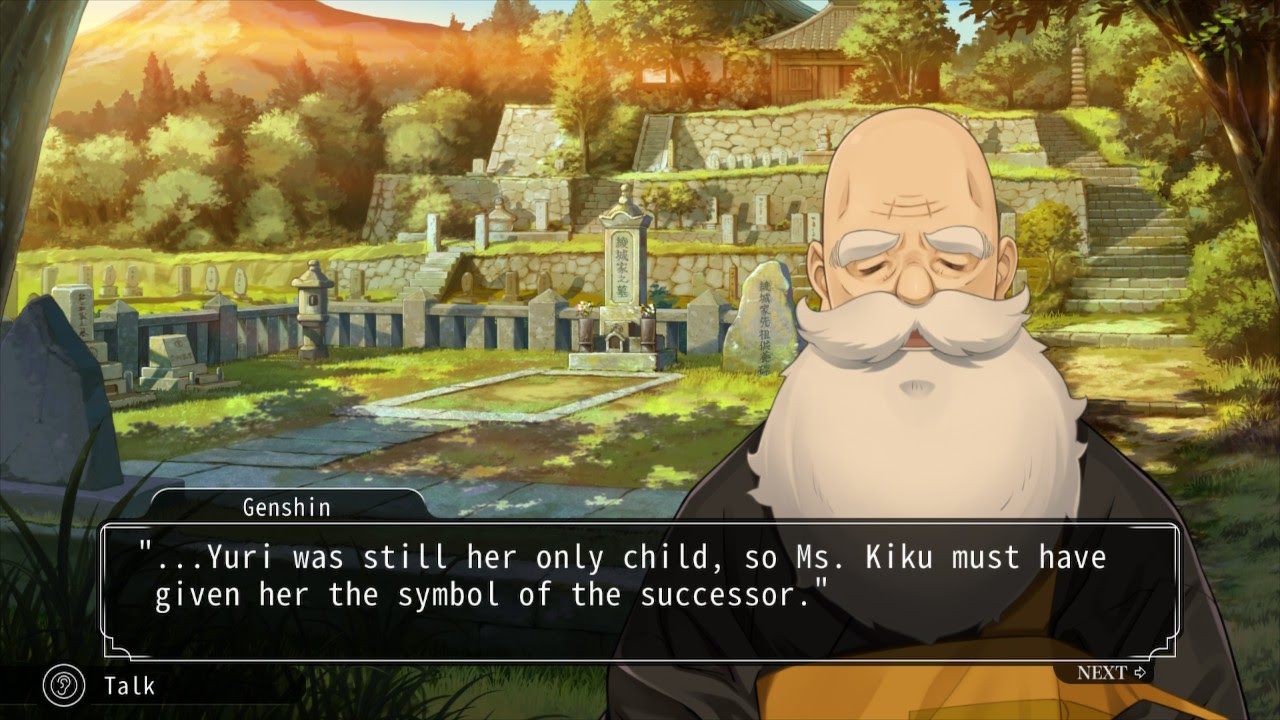
The Missing Heir (Switch)
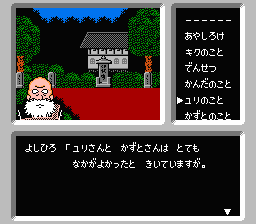
Kieta Koukeisha (FDS)
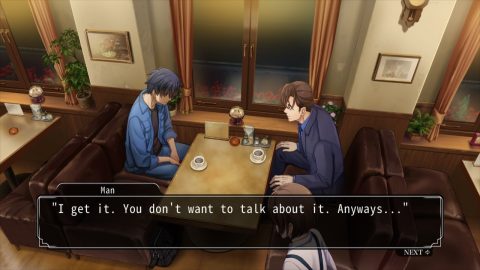
The Girl Who Stands Behind (Switch)
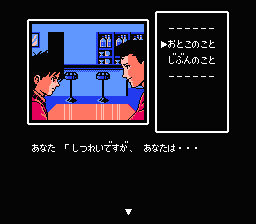
Ushiro ni Tatsu Shoujo (FDS)
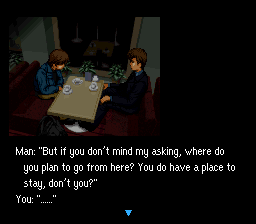
Ushiro ni Tatsu Shoujo (SFC fan translation)
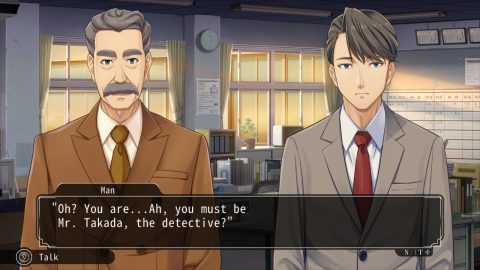
The Girl Who Stands Behind (Switch)
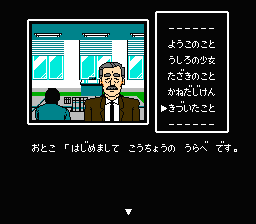
Ushiro ni Tatsu Shoujo (FDS)
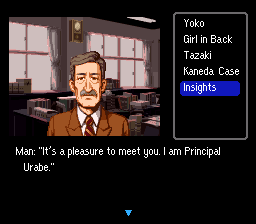
Ushiro ni Tatsu Shoujo (SFC fan translation)
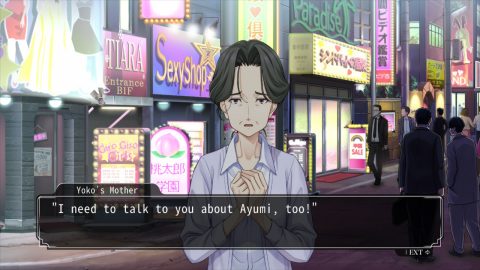
The Girl Who Stands Behind (Switch)
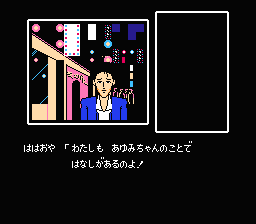
Ushiro ni Tatsu Shoujo (FDS)
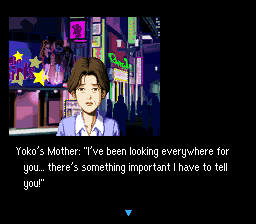
Ushiro ni Tatsu Shoujo (SFC fan translation)
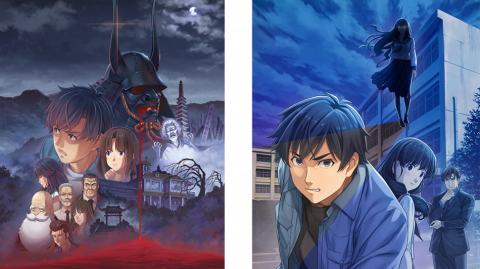
Official reinterpretations of the original FDS covers in the style of the Switch remake
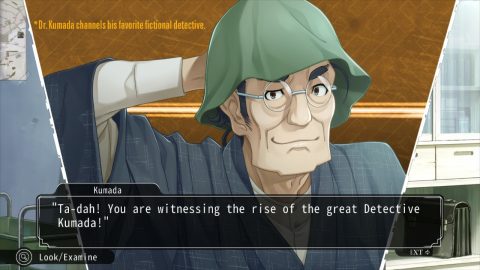
As a tongue-in-cheek acknowledgement to The Missing Heir’s heavy references to Seishi Yokomizo’s novel The Inugami Family (1951), in one scene where Doctor Kumada is daydreaming about becoming a detective and solving the case, he imagines himself dressed as Kosuke Kindaichi, the eccentric detective in The Inugami Family (and many other Yokomizo stories).
